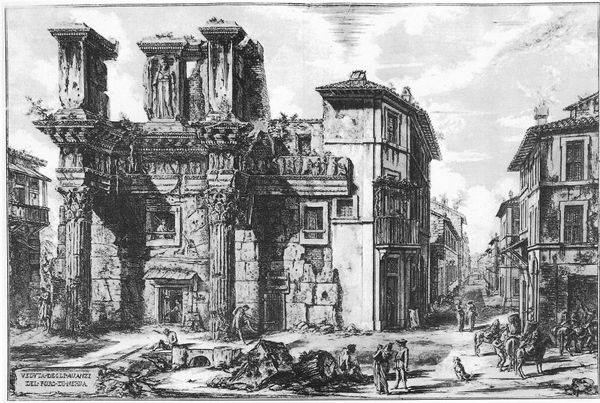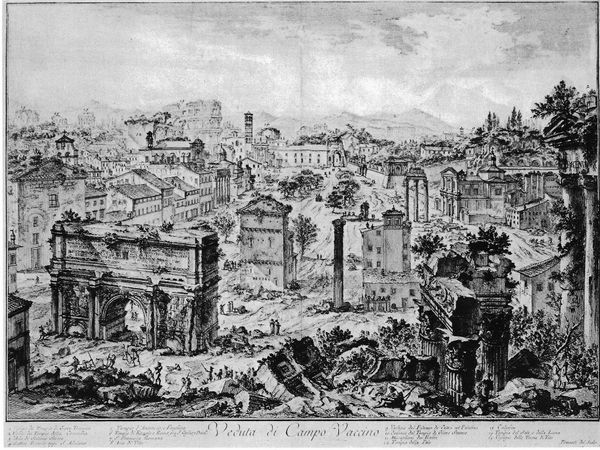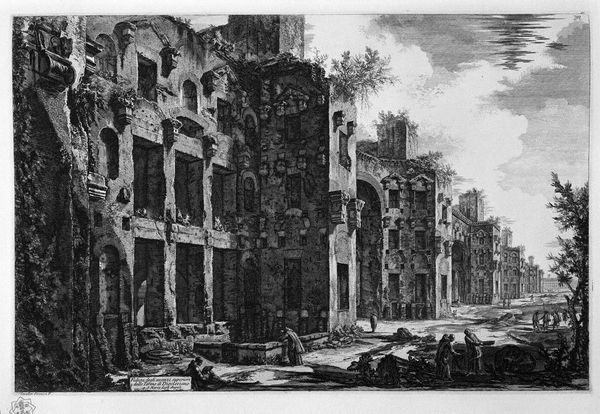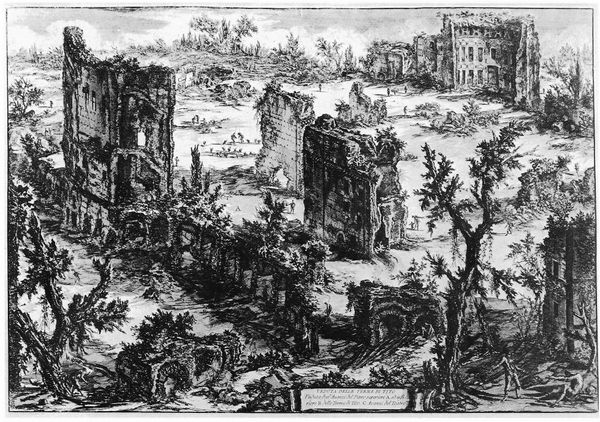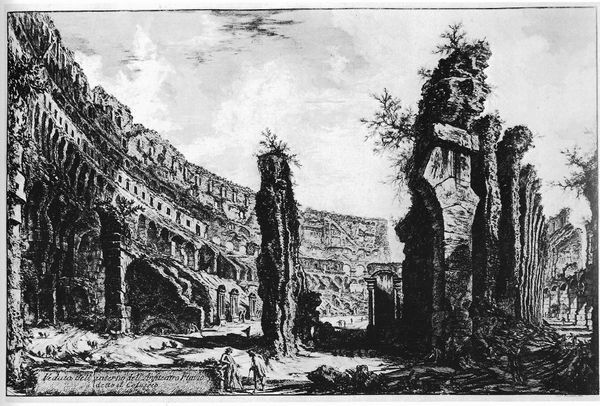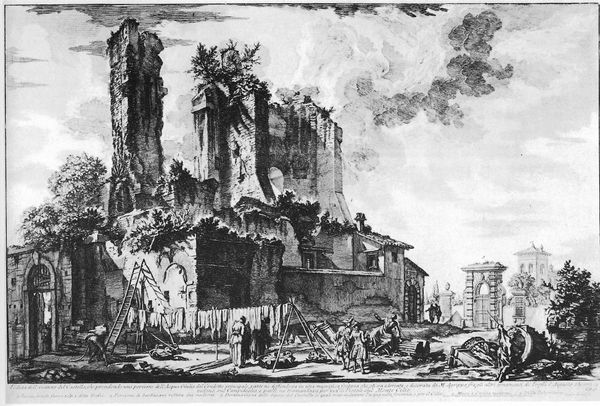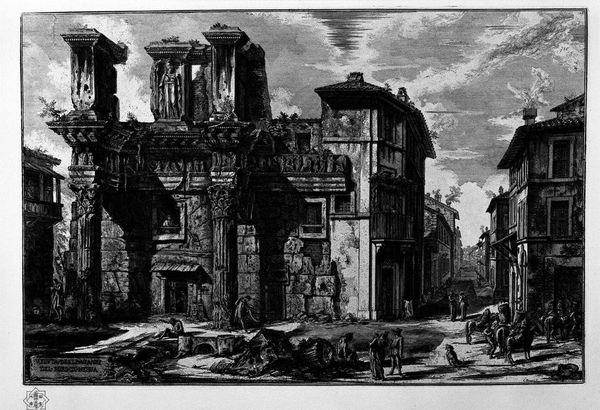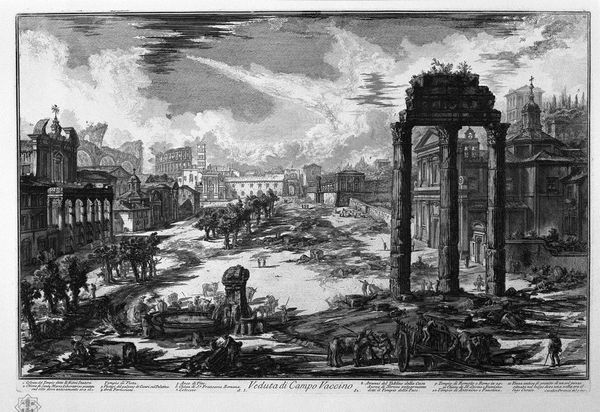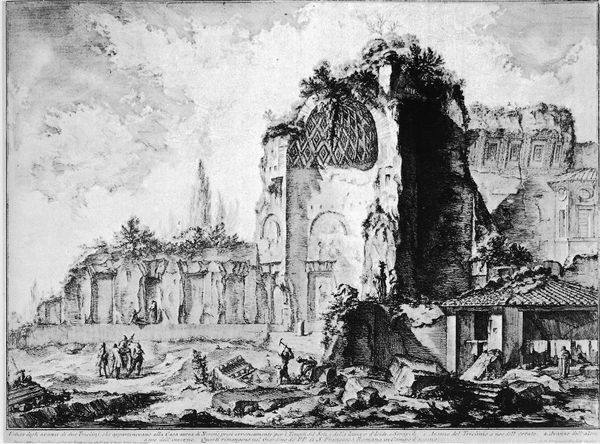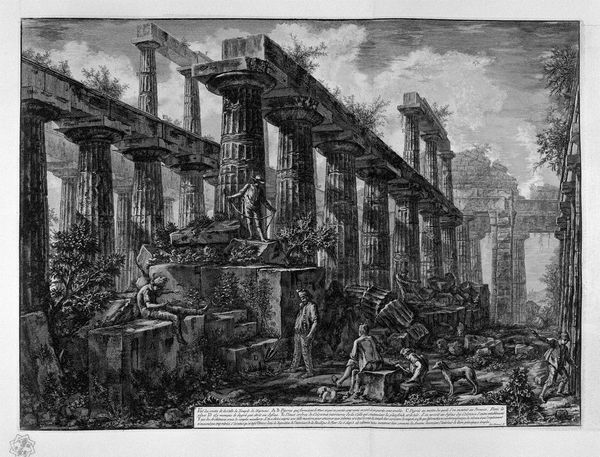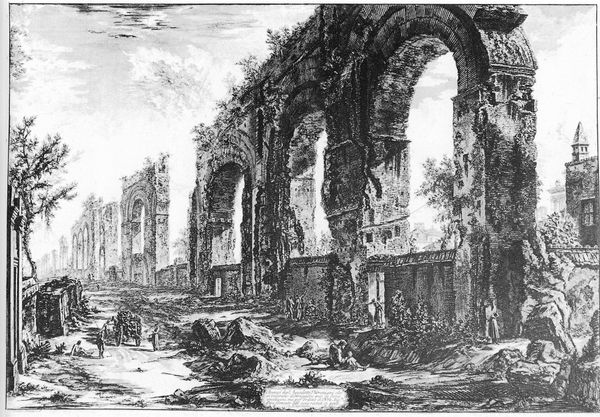
drawing, print, etching, ink, engraving, architecture
#
pen and ink
#
drawing
# print
#
etching
#
pencil sketch
#
landscape
#
form
#
charcoal art
#
romanesque
#
ink
#
column
#
line
#
cityscape
#
engraving
#
architecture
#
realism
Copyright: Public domain
Curator: Here we see Giovanni Battista Piranesi’s print, “Vedute di Roma.” The Colosseum dominates the scene. Editor: It’s a marvel of layered textures. The stark contrast between light and shadow creates a dramatic, almost theatrical mood. The detail is incredible. Curator: Indeed. Piranesi captures the monumentality of Rome's architectural ruins, etching with a precision that evokes a sense of grandeur tinged with decay. What I see is a commentary on the passage of time, and also the appropriation of classical ideals for new socio-political aims. Editor: I'm intrigued by how the artist emphasizes the Colosseum’s ruinous state. Note how the deliberate organization of lines and shading constructs volume and suggests decay—but even more significantly the life of the people. The city springs out between the cracks in the ancient order. Curator: Piranesi wasn't merely documenting; he was interpreting. He highlights the sublime power of the Roman Empire through architecture. Consider the way he uses perspective to exaggerate the scale and invoke a sense of awe, even though, in truth, we are meant to find a warning in that overreach. Editor: What I appreciate most is the composition. The carefully chosen viewpoint offers multiple layers for analysis. It draws your eye into this space, between history and the everyday life within the walls of Rome. And note the dark foregorund... the shadows are perhaps the subject of the entire print, giving darkness almost material weight. Curator: His skill with light and shadow also accentuates the inherent geometric shapes of the structures and adds significant emotional weight to his narrative about time. Editor: What resonates is the way that architectural decay creates new spaces, how history is lived and reused and altered over time. Curator: I’d say his choices guide us to view these ruins not just as remnants of a lost empire but as components in the evolving Roman political identity. Editor: A space filled with stories, built with intention. I hadn't expected such life in ruins. Curator: I agree. Piranesi's Rome transcends mere architectural study, it becomes a profound investigation of the socio-political dynamics over time.
Comments
No comments
Be the first to comment and join the conversation on the ultimate creative platform.
